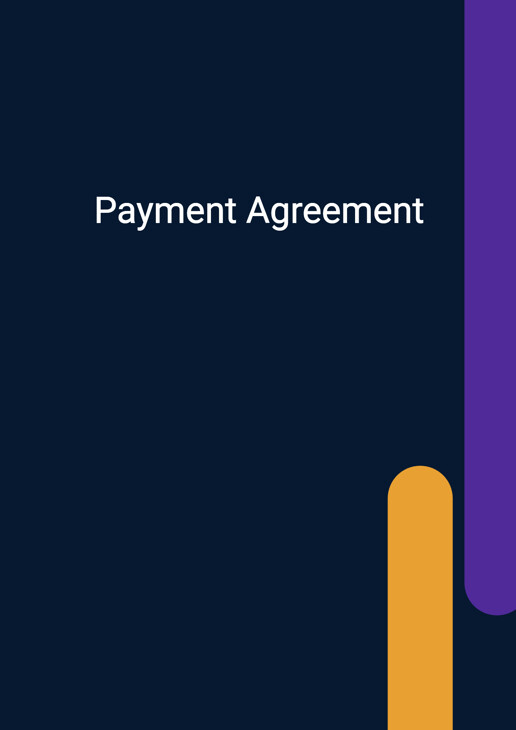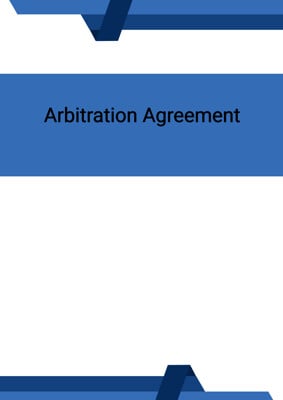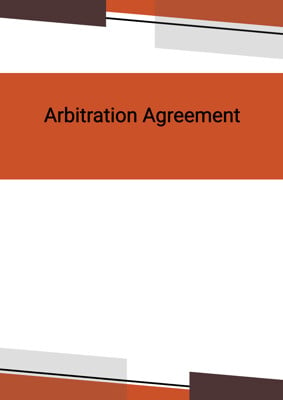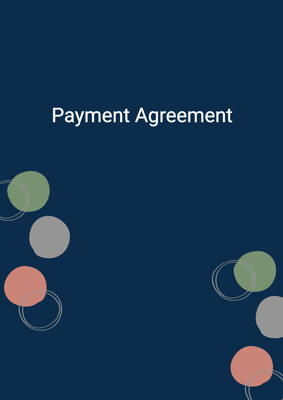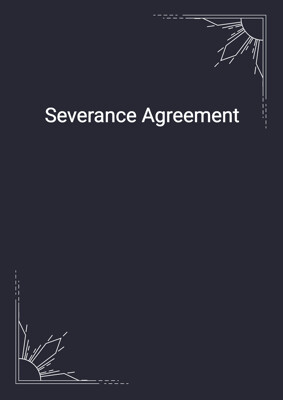How to Tailor the Document for Your Need?
01
Create Document
Fill in the details of the parties. You can click the "Fill with Member’s Information" button to complete it with information saved to your account.
02
Fill Information
Please fill in any additional information by following the step-by-step guide on the left hand side of the preview document and click the "Next" button.
03
Get Document
When you are done, click the "Get Document" button and you can download the document in Word or PDF format.
04
Review Document
Please get all parties to review the document carefully and make any final modifications to ensure that the details are correct before signing the document.
Document Preview
Document Description
The Payment Agreement is a document that outlines the terms and conditions for the repayment of a debt. It is important because it provides a clear record of the debt amount and sets out a payment plan for the debtor to repay the creditor. The document consists of several sections, each serving a specific purpose.
The document begins with a title, 'Payment Agreement,' which clearly indicates its purpose. It then provides a brief introduction, stating that the agreement is made between the debtor and the creditor. The importance of the document is highlighted by emphasizing the debtor's acknowledgement of the debt and their agreement to make full payment.
The first section of the document is the 'Debt Acknowledgement.' It states that the debtor acknowledges owing the debt in full to the creditor. This section ensures that both parties are aware of the debt amount and establishes the debtor's obligation to repay it.
The second section is the 'Payment Plan.' It describes the agreed-upon payment plan in detail. The debtor is required to make payments to the creditor on or before the scheduled dates specified in the payment plan. The section also mentions the payment method for each installment. This ensures that both parties are aware of the payment schedule and method.
The third section is the 'Release.' It states that the creditor agrees to release the debtor from any prior actions or claims related to the debt as of the date of the agreement. However, it clarifies that the debtor is still obligated to pay the debt according to the payment plan. This section protects the debtor from any legal actions related to the debt prior to the agreement.
The fourth section is the 'Default.' It outlines the consequences of the debtor's default on any payments. If the debtor fails to make the required payments as described in the payment plan, the remaining unpaid balance becomes due and payable immediately. The creditor is entitled to charge the debtor an interest of 20% on the unpaid balance. This section ensures that both parties understand the consequences of non-payment.
The fifth section is the 'Indemnity.' It states that the debtor agrees to indemnify the creditor against any loss suffered or incurred due to the debtor's payment default. The debtor is responsible for reimbursing the creditor for any costs, expenses, and taxes associated with enforcing the agreement. This section protects the creditor from financial losses caused by the debtor's default.
The sixth section is the 'Warranties and Representation.' It includes representations and warranties made by each party. Both parties represent and warrant that they have the authority to enter into and fulfill their obligations under the agreement. This section ensures that both parties have the legal capacity to enter into the agreement.
The seventh section is the 'Assignment.' It states that the creditor may assign the agreement with written notice to the debtor. In the event of such assignment, the assignee may amend the terms of the payment plan. This section allows the creditor to transfer their rights and obligations under the agreement to another party.
The eighth section is the 'Waiver.' It clarifies that no failure or delay by any party in exercising their rights or remedies under the agreement shall impair such rights or remedies. This section ensures that the parties' rights and remedies remain intact even if they are not immediately exercised.
The ninth section is the 'Governing Law and Jurisdiction.' It refers to a jurisdiction clause that specifies the governing law and jurisdiction for any disputes arising from the agreement. This section ensures that both parties are aware of the applicable laws and the jurisdiction in which any legal proceedings would take place.
The tenth section is the 'Severability.' It states that if any term or condition in the agreement is held to be invalid by a court, the agreement will be interpreted as if the invalid term or condition was not included. This section ensures that the remaining terms and conditions of the agreement remain enforceable.
The eleventh section is the 'Entire Agreement.' It states that the agreement contains the entire agreement between the parties and supersedes any prior written or oral agreements. This section ensures that the agreement is comprehensive and that any previous agreements are no longer valid.
The final section is the 'Counterparts.' It states that the agreement can be executed in counterparts, meaning that each party can sign a separate copy of the agreement. This section ensures that the agreement is legally binding even if the parties sign separate copies.
In conclusion, the Payment Agreement is an important document that establishes the terms and conditions for the repayment of a debt. It consists of several sections, each serving a specific purpose, such as acknowledging the debt, outlining the payment plan, addressing default, and providing indemnity. The agreement is governed by applicable laws and jurisdictions, and it supersedes any prior agreements between the parties.
How to use this document?
1. Provide information: Enter the debtor's and creditor's information in the agreement, including their names and addresses. This ensures that both parties are clearly identified.
2. Establish the debt amount: Clearly state the amount of debt owed by the debtor to the creditor. This ensures that both parties are aware of the exact debt amount.
3. Create a payment plan: Develop a detailed payment plan that specifies the payment amounts, dates, and methods. This ensures that both parties understand the repayment schedule.
4. Include a default clause: Clearly outline the consequences of default, such as the remaining balance becoming due immediately and the creditor charging interest. This ensures that both parties understand the consequences of non-payment.
5. Address indemnity: Include a provision that requires the debtor to indemnify the creditor for any losses incurred due to payment default. This ensures that the creditor is protected from financial losses.
6. Include warranties and representations: Ensure that both parties represent and warrant their authority to enter into the agreement and fulfill their obligations. This ensures that both parties have the legal capacity to enter into the agreement.
7. Consider assignment possibilities: Include a provision that allows the creditor to assign the agreement with written notice to the debtor. This ensures that the creditor can transfer their rights and obligations if needed.
8. Clarify governing law and jurisdiction: Specify the governing law and jurisdiction for any disputes arising from the agreement. This ensures that both parties are aware of the applicable laws and the jurisdiction in which legal proceedings would take place.
9. Address severability: Include a provision stating that if any term or condition is held invalid, the agreement will still be enforceable. This ensures that the remaining terms and conditions remain valid.
10. Ensure comprehensive agreement: Make sure the agreement contains all necessary terms and conditions and supersedes any prior agreements. This ensures that the agreement is comprehensive and that any previous agreements are no longer valid.
11. Sign in counterparts: Allow the parties to sign separate copies of the agreement. This ensures that the agreement is legally binding even if the parties sign separate copies.
Not the right document?
Don’t worry, we have thousands of documents for you to choose from:
